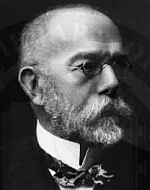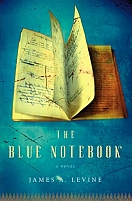FICTION
|
|

|
|

Young prostitutes
wait for customers in Mumbai's red light district
Photo credit: Kay
Chernush for the U.S. State Department
|

|

Heinrich Hermann
Robert Koch (1843 –
1910) :German physician for isolating Bacillus anthracis (1877), the Tuberculosis bacillus
|
|
BOOK
ILLUMINATIONS
From Merrimon Book Reviews
HOME
ROMANCE
FICTION SUSPENSE & THRILLERS
MYSTERY
AUTHORS REVIEWER
PROFILES
|
The Blue Notebook

by James A. Levine

Disturbing
and beautiful
Sold into a life of
prostitution at age six by her father, Batuk tells her story through a
blue notebook and sheets of loose paper, pen and pencils she can
scrounge. Batuk remembers her past and chronicles her current
life at age fifteen and that of her friend, another boy prostitute
Puneet. In THE BLUE NOTEBOOK,
James A. Levine tells through fiction the story of the exploitation of
children and the darker side of Indian sexual slavery, indeed of a
global crisis. From the possible poverty of rural India that
might motivate a family to sell their children to the substructures of
society and class that use and promote the trade in children, THE BLUE NOTEBOOK speaks from
within the culture through the voice of the young girl herself rather
than a distant, detached voice. Her voice is both innocent,
seeing the word through a child's eye, and simultaneously mature and
wise in ways that haunt an adult reader living outside of her
world. Caught inside the world and yet transcending it in
friendship and the trace of writing she leaves behind, Batuk draws the
reader into the story. The sexual details of her life as a
prostitute, often cloaked in euphemisms, are not as prominent in the
narrative as one might expect, but be warned, the author does not shy
away from describing the horrors and brutality suffered by Batuk
despite the beauty of other parts of the narrative. Although the
novel is not realistic as whole in its style, even the mythical
language and beautiful prose does not hide the darker side of the world
described. Even the change in the narrative at the ending
reinforces the stark, cold reality of her life in a way that haunts the
reader long after the last page.
While the brutality of the story's events shocks the reader, the prose
itself haunts with its beauty. James A. Levine layers
the narration of the events in Batuk's life with an enchanting fairy
tale story interpretation of those events. THE BLUE NOTEBOOK is deeply
troubling on multiple levels. Quite simply the novel is both
disturbing and beautiful at the same time. A statement tells the
reader that the author will donate proceeds of the book to the
International and National Centers for Missing and Exploited
Children. Other than this statement, the book does not have the
feel of a preachy, shaming the reader for inaction cause.
Instead, the author makes the reader feel the plight of his subject
through the beauty of fiction, engaging the reader's imagination
through the beauty of his ability to tell a rich story that reaches
more than just the intellect or the social conscience. The
author's background in science and medicine seems to add to the telling
of Batuk's story. The most chilling and realistic scenes center
around the medical events in her life. Here, he writes with an
ease that cuts through the beauty of the prose with a simplicity, Here
he, crystallizes the experiences and the broader ramifications of the
global crisis with just a few words and references. Through and
through, this is an exceptional novel. The haunting vision
achieved through the contrast between the poetic narrative and the
subject matter THE BLUE NOTEBOOK
encourages the reader to ask questions and explore the book with other
readers. Although the nature of the subject matter may not be
designed for every group, THE BLUE
NOTEBOOK would make a great book club selection.
Publisher: Spiegel
& Grau (July 7, 2009)
Reviewed by Merrimon,
Merrimon Book Reviews
Review Courtesy of Amazon Vine

|
|
|